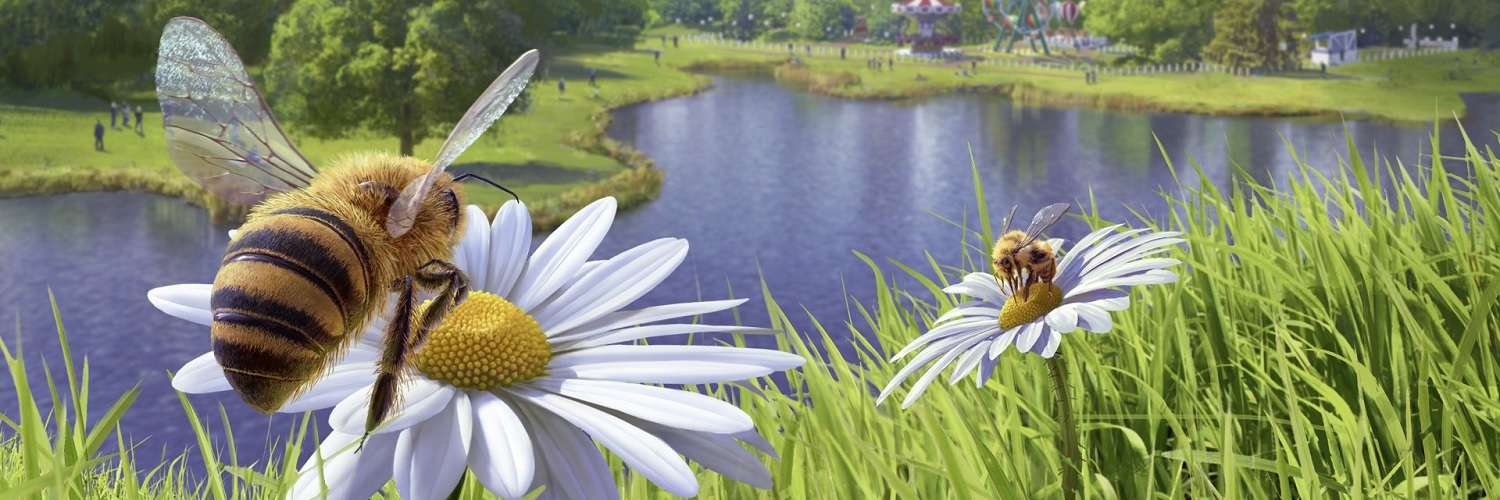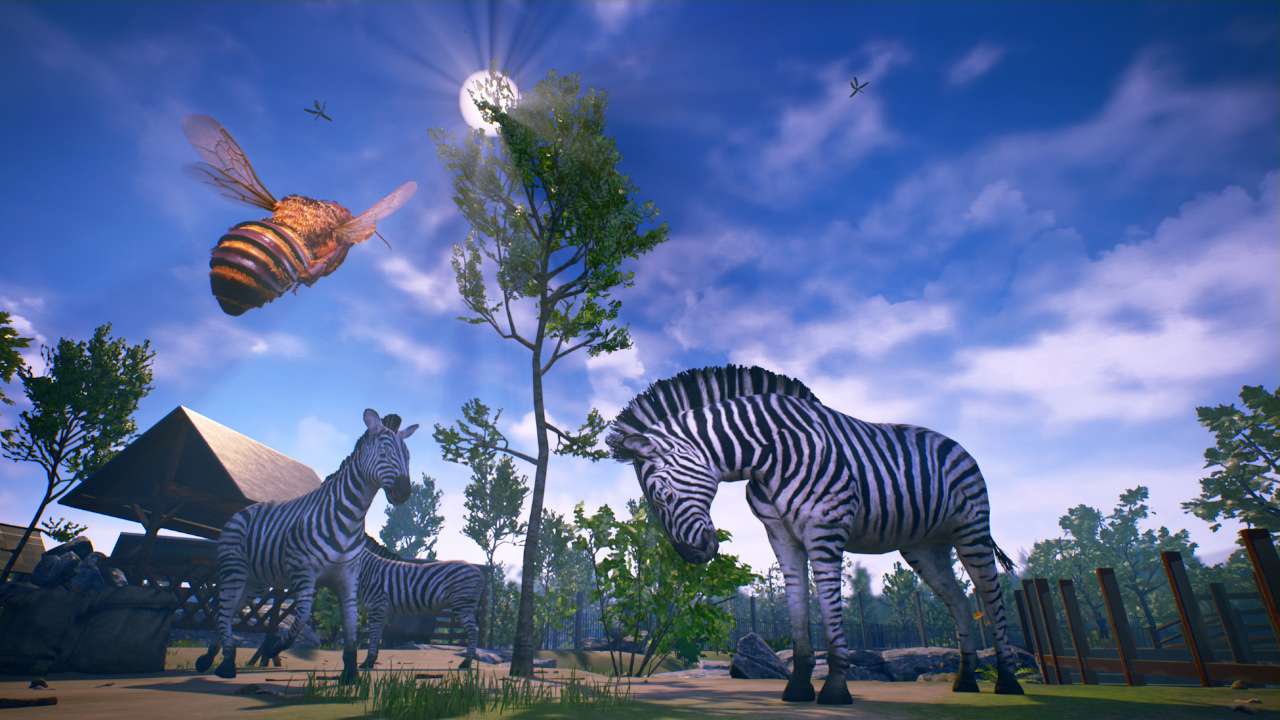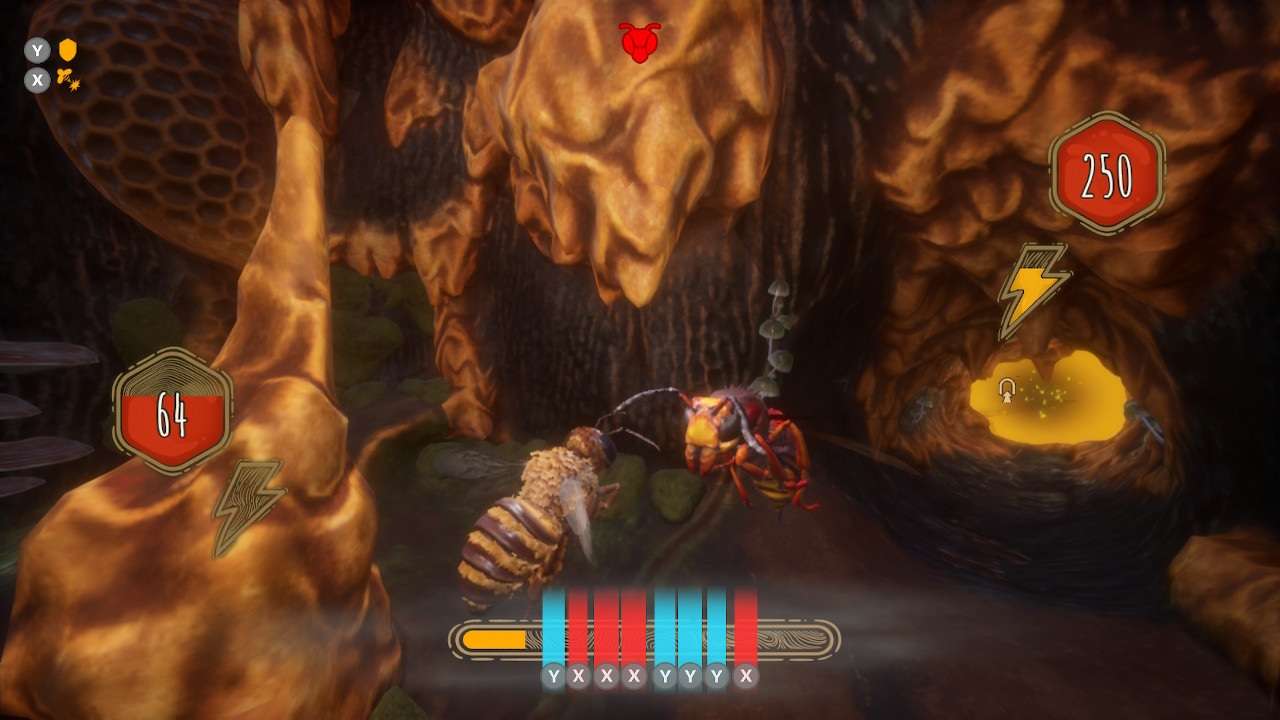
Bee Simulator Switch Review
The last time I played as a bee in a video game it was the year 1998, the game was a third-person shooter that had a kick-ass menu theme and featured a bee with a arsenal of various weapons to blow up mutated insects – it was Buck Bumble. I can say the team at Varsav Game Studios is not going for the same market with Bee Simulator, as it tries to stay a bit more true to the activities of a bee.
Games with simulator in their title have lost some meaning over the years due to the overuse of the word. Just a quick search on something like Steam brings back over 2,000 results, featuring serious games like Euro Truck Simulator 2, Farming Simulator 19 and Bus Simulator 18, but then there are the games that take the mickey out of the word simulator – Goat Simulator, Shower With Your Dad Simulator and Surgeon Simulator just to give a few examples. As for which hive Bee Simulator sits in, well, it is aiming to inform the player the life of a bee, but I would not call it a simulator as such, more of a game that wants to share knowledge of the importance of bees for our planet and what bees get up to during their life.

Bee Simulator wants to tell everyone how key bees are to our ecosystem. When starting a new game an introduction narrates how bees are the most important pollinator that pollinate almost 100 crop types, and without those bees, a lot of things would not exist. It then goes on to note that bees have been in decline in various countries for many reasons – natural predators (bears), and human dangers that we have thrown into the mix, such as pesticides. The introduction finishes by telling us that people are noticing the decline and are trying to help fight through science, looking into how we can help the bee, ending on a note that we can all aid bees pollinating by learning about them and spreading the word. The way the game is presented feels like it could be used in schools, aiming at a younger audience to educate and also have something to entertain – it’s nice to see something like this in the video game, an area where a lot of kids are invested in.
As for the game itself, it begins with the player taking control of a fresh new honey bee in third person, even giving it a name before starting its journey into the world and learning how to get around. Early training showcases how to fly, get around the hive, collect pollen, an easy function as it requires simply flying through the ring that hangs above flowers with pollen – various flowers have different amount of pollen, signalled by their colour during bee vision, a sort of first-person hint vision. Not long is spent in the tutorial before being summoned to the Queen Bee, who is basically your boss, and gives you an order to go out into the world of Central Park, New York, to find a new home to move to as the humans are about to chainsaw down the bee’s tree home.

Flying is a key mechanic, since it is how you get anywhere in Central Park, but it is not the smoothest of actions. It does not feel like insect flying, with the camera view making it look like the bee is stuck in the middle of the screen and that the world seems to move. It’s hard to describe, but it feels more like floating in a first-person shooter with noclip than real flying. Movement is tide to the left stick, with right stick used to steer in direction, similar to six degrees of freedom games. Taking flight through the open world is fine, but the issues with the controls arise more when things require tight manoeuvres. Controls for flight do not offer the accuracy, being fiddly that I would often find myself flying into the side of walls in tight spaces or missing a checkpoint ring due to unable to predict how the bee will turn.
Campaign structure is made up of short story beats to offer around two to three hours gameplay. This is if you decide to ignore the side content and press on with the game’s story checkpoints that covers around eight chapters. Scattered around the park are other colour checkpoints that stand for an event type, which will often creep into the main campaign as well at some point – pollen collecting, racing, dancing and battle.
Pollen collecting is straightforward, turning the normally calm collection of pollen into a time limit event, making it a fly through the ring challenge that is often close to the ground or surfaces, due to how plants grow. Racing is another fly through the ring challenge, but comes in two flavours. One is based on simply making it to the end of the route without missing more than three rings, while the other is the same idea, but throws in another bee that must be caught up with to pass the challenge. Dancing is sadly not a Bust-a-Groove mini game, but more like Simon Says, in which a bee will perform a 360 degree arc in one of four directions – up, down, left, right – and the player needs to follow the same sequence to pass. These do not ever get challenging as they play it safe and do not force players to remember long sequences to copy.

Battle is one area where it should get its own paragraph because the mechanics change depending on which difficulty is picked in the beginning of the story, either easy or hard. Easy makes battles turned based and more like a quick-time event, where a button would appear and I had to press it to attack. On hard, this becomes real time, where players must either predict or guess what the opposition is going to do, then either block or attack in that direction to guard or deal damage. This means that going on hard is the best experience with Bee Simulator, but this then also makes the times harder to beat in the other events. One annoying one was a racing event trying to catch a bee, but due to the controls, it took me over 15 attempts to do it over more than one lap of the course. Compare that to easy, which allowed me to catch up to the Bee within just five rings. Easy is certainly more for the little kids who aren’t good at games, more of a story-only difficulty, while hard will offer some challenge, but more from the controls rather than the actual task being asked of the player.
I wish Bee Simulator was more exciting than it is, but the gameplay elements are not fleshed out, so everything becomes monotonous. All it feels to be doing in the game is flying to way points, doing a mini-game and then flying back to the hive. There are times where I thought things were going to get interesting, such as trapped in a kitchen, but that is turned into a race, and with the controls as they are, you can tell how that turned out. Bee Simulator has this lovely world to explore, but everything in it feels lifeless. Animals are a big problem, and after coming from a game like Planet Zoo, where in that game those animals were the stars of the show, the animals here, while look nice, are extremely stiff and do not behaviour like you would expect. This is similar to humans as well, but they do get to perform a few more activities than the standard animals – having a panic, sports, etc.

One thing to note that this game does well is the scale. It beautifully manages to render a bee and how tiny they are to the rest of the world. The world is filled with nice details, but is clearly handicapped on the Switch, with a low resolution and full colour saturation making everything blurry/grainy, and this lack of clean visuals takes some of the detail away. Frame rate is aiming for 30fps, but it can struggle at times to hit that in high dense detailed areas. A pleasant surprise is the soundtrack. This is created by Mikołaj Stroiński, who did the score for The Witcher 3, and his talent brings a score to Bee Simulator that makes flying around all that more pleasing. Music is the positive side to the audio, as the voice acting isn’t great, but this could be down to the over-exaggeration in delivery, almost like a mum talking to their young baby. And to top off the negative, while it does not alter the quality of the game, the RRP for Bee Simulator is £34.99/$39.99, feeling expensive for what the product is. There is the addition of Co-op and PvP, but it suffers from the same issues as the main game.
The premise for Bee Simulator is good, and I like the idea of doing education through video games in such a uniquely refreshing way, but the execution here has problems. When the game is not asking much from the player, then Bee Simulator ends up being somewhat fun with a great sense of scale, but the controls hamper such an important part of the game that the experience ends up being frustrating. Throw in repetitive tasks and muddy visuals and what you have is a video game that sadly does not deliver on its potential. It is hard to recommend Bee Simulator out right, especially at its asking price, but some of the younger kids might enjoy what Bee Simulator has to offer.
